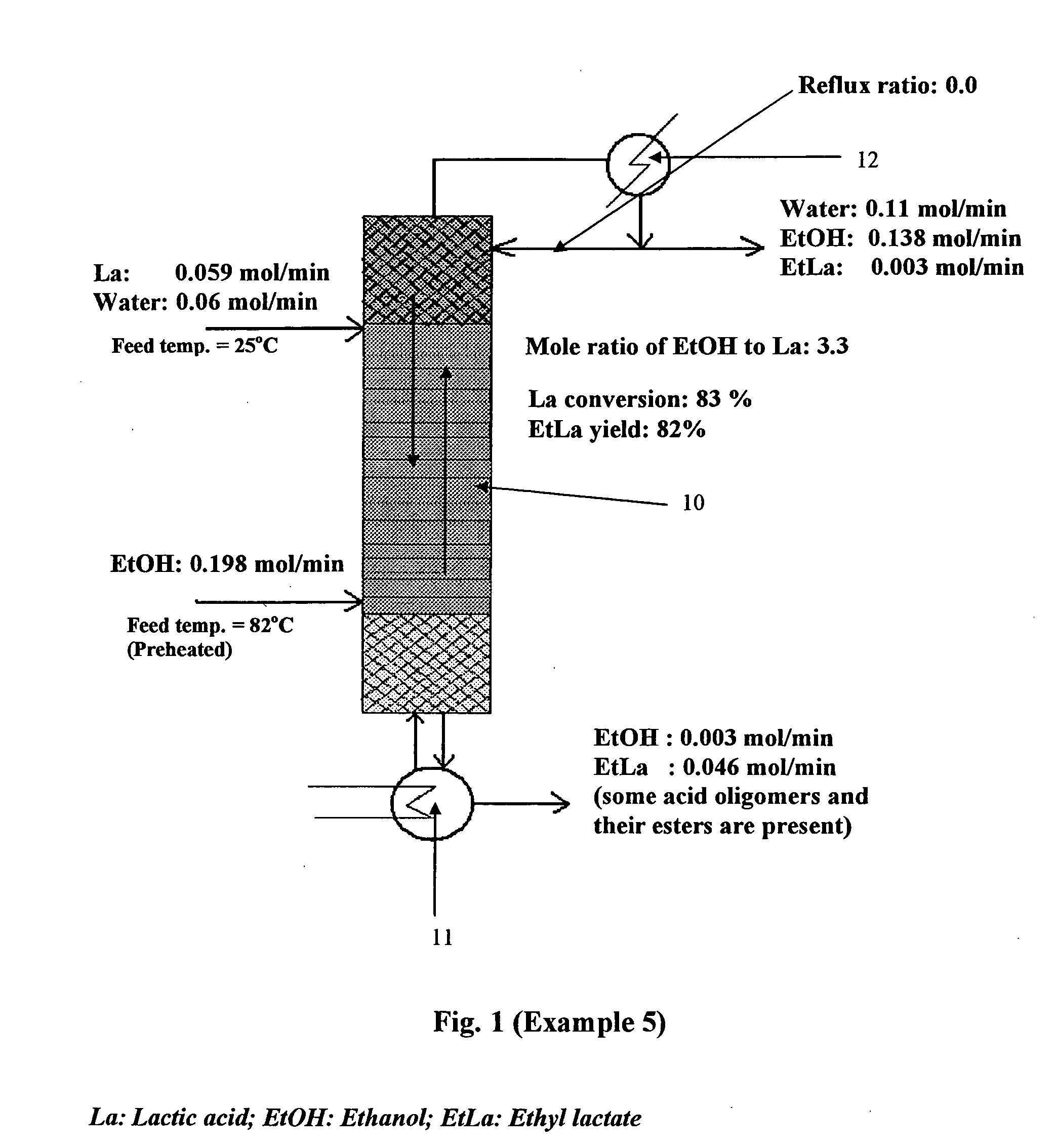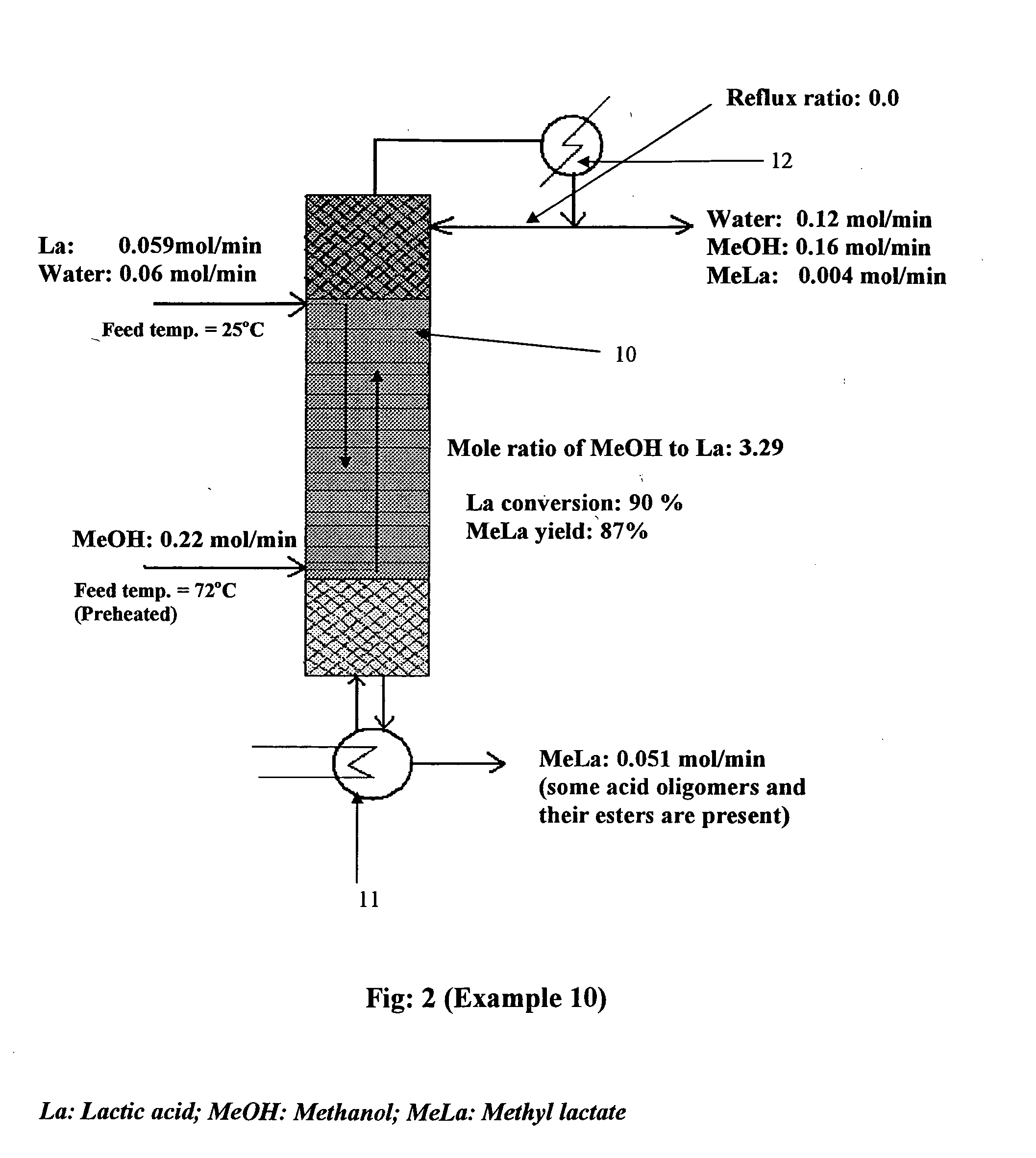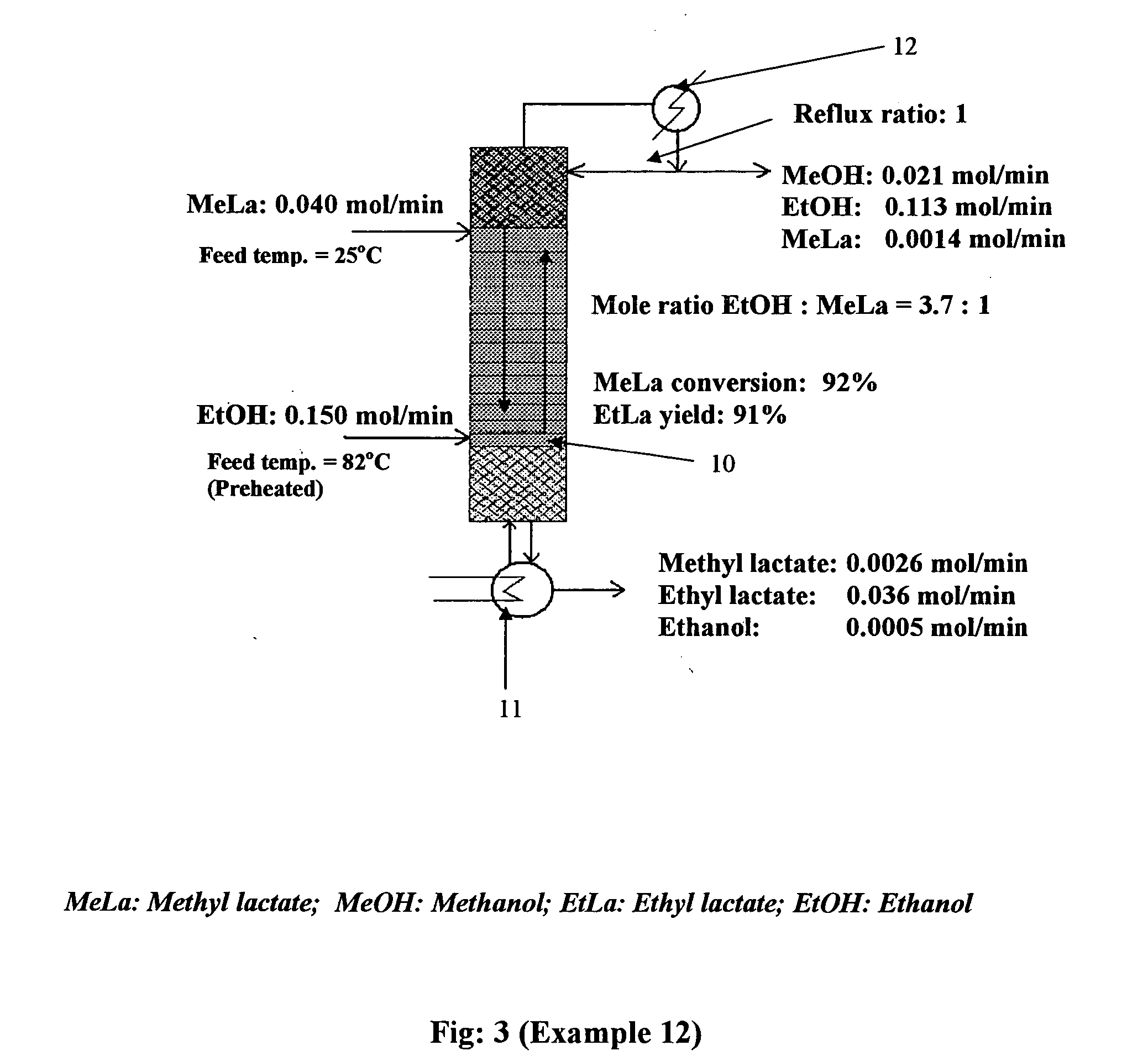Process for production of organic acid esters
a technology of organic acid esters and process, which is applied in the direction of sustainable manufacturing/processing, organic chemistry, and separation processes, etc., can solve the problems of high energy cost, large equipment and high equipment requirements for conventional continuous processes for making organic acid esters, and the continuous process of producing lactic acid esters is quite expensive,
- Summary
- Abstract
- Description
- Claims
- Application Information
AI Technical Summary
Benefits of technology
Problems solved by technology
Method used
Image
Examples
examples 1 to 8
[0069] Bench-scale ethyl lactate formation. The following experiments in Examples 1 to 8, involve lactic acid and alcohols, using the bench-scale reactive distillation process for producing organic acid esters of the present invention.
[0070] Ethyl Lactate Formation: In the reactive distillation process for ethyl lactate formation, absolute ethanol or azeotropic ethanol was fed near the bottom of the column and lactic acid solution in water was fed near the top of the column. Ethyl lactate was generated in the reactive zone of the distillation column and exited at the bottom of the column. Depending on the feed compositions, ethyl lactate sometimes contained a small quantity of ethanol and water that was easily separated by simple distillation and recycled. Water and excess ethanol exited at the top of the column. If the reactive distillation process was integrated into an existing ethanol production facility, the ethanol / water top product can be recycled back into the process to re...
examples 9 and 10
[0076] Methyl lactate formation: The formation of methyl lactate in the laboratory scale reactive distillation column was studied in much the same fashion as in ethyl lactate formation. Results of experiments conducted are given in Table 2; a schematic of a typical experiment (Example 10) is given in FIG. 2.
TABLE 2Esterification of Lactic acid with MethanolLAH2OMeOHAq. LAfeedfeedfeedMeOH:FeedrateraterateLARefluxBottom product molecomp.Mol / Mol / Mol / Molarratio% LAcomposition (%)ExWt %minminminratio(L / D)conv.H2OMeOHMeLaLa 9200.0140.280.16810.130.54666301.391.3410850.0590.060.223.290900091.58.5
MeLA=Methyl Lactate
[0077] Methanol and water were produced at the top of the distillation column, and methyl lactate along with unreacted lactic acid was produced at the bottom of the column. Again, a slight amount of methyl lactate was observed in the distillate stream in some cases. A lactic acid conversion as high as 90% was observed experimentally.
[0078] The primary advantage of producing ...
examples 11 and 12
[0079] Trans-esterification of methyl lactate to ethyl lactate: The ability to produce methyl lactate straightforwardly by reactive distillation opens an additional pathway to lactate ester formation—that of transesterification. The advantage of transesterification reactions is that there is no water produced or required in the system, thus hydrolysis of the esters is not a concern. To explore this route, several transesterification experiments were conducted in the lab scale reactive distillation column. In transesterification, methyl lactate was fed at the top of the column reactive zone and ethanol is fed at the bottom of the reactive zone. Ethanol moved up the distillation column and reacted with methyl lactate to give ethyl lactate and methanol. All methanol and excess ethanol exited at the top of the column, and ethyl lactate, unreacted methyl lactate, and a small quantity of ethanol were removed continuously from the reboiler.
[0080] Results of the transesterification of meth...
PUM
| Property | Measurement | Unit |
|---|---|---|
| Fraction | aaaaa | aaaaa |
| Fraction | aaaaa | aaaaa |
| Acidity | aaaaa | aaaaa |
Abstract
Description
Claims
Application Information
 Login to View More
Login to View More - R&D
- Intellectual Property
- Life Sciences
- Materials
- Tech Scout
- Unparalleled Data Quality
- Higher Quality Content
- 60% Fewer Hallucinations
Browse by: Latest US Patents, China's latest patents, Technical Efficacy Thesaurus, Application Domain, Technology Topic, Popular Technical Reports.
© 2025 PatSnap. All rights reserved.Legal|Privacy policy|Modern Slavery Act Transparency Statement|Sitemap|About US| Contact US: help@patsnap.com



